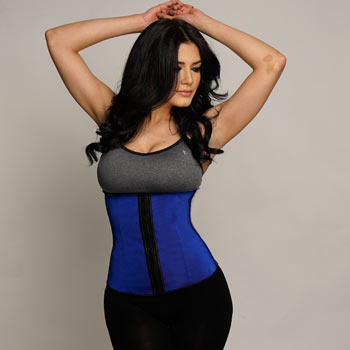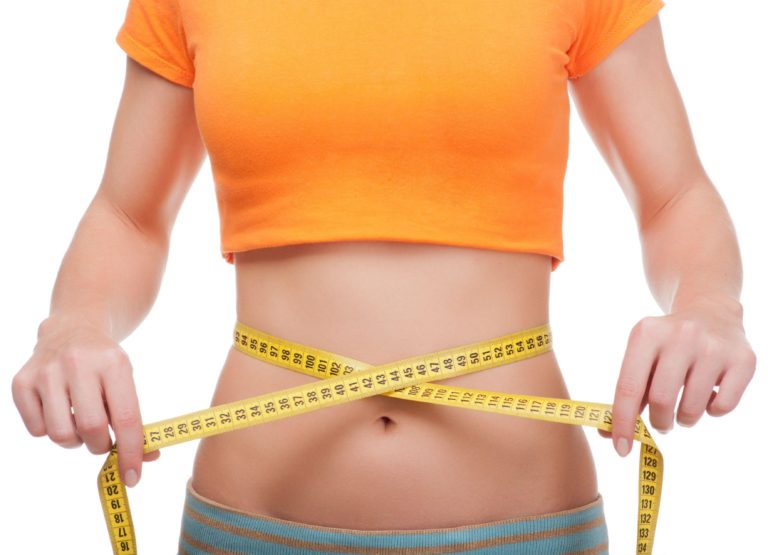Waist Training Diet Do’s and Don’ts: What to Eat While Waist Training
Remember that Thanksgiving episode of Friends, where Joey makes Monica cook him a whole turkey, promising that he’ll eat it all on his own? On the day, when he can’t eat anymore, he just leaves the room to put on Rachel’s maternity pants – and voila, comes back to eat more.
A corset is the opposite of those maternity pants. Image the tightest pair of jeans you own but they extend all around your stomach – compressing and reducing how much your tummy is able to accommodate.
No wonder so many people report losing weight with waist training – eating in and of itself can be a challenge when you’re strapped into a waist trainer! So how and what exactly are you supposed to eat?!
Don’t worry, we’ve got your covered. Here’s a roundup of all our best tips of the waist training diet – that includes what to eat, how to eat, foods to avoid while waist training as well as the best eating practices to follow.
Bon appetit!
Do Take Advantage of the Situation
One of the best things about waist training is that it modifies your relationship with food pretty much immediately.
The compression and reduced stomach capacity means you won’t be as hungry and you won’t be able to eat as much as you normally can. This does not mean you should skip meals. In fact, avoid starving yourself – that’s both unhealthy and counterproductive to weight loss.
But it does mean you can take advantage of the situation to be pickier about what you choose to put in your body. Use the reduced cravings to choose healthier, more nutritious foods for yourself.
Do Eat Small Meals Often
You can’t eat big meals while wearing a corset, so it is important to eat smaller meals throughout the day to ensure your body gets the nutrition it requires.
A smart way to do this is to plan out a healthier version of 3 meals you’d eat in a day and then break that down into 6 smaller mini-meals.
Again, forgetting to eat completely (which is possible while wearing a corset) will only increase your problems by making you weak and undernourished. If needed, set six alarms on your phone, to remind yourself to eat something small and healthy at regular intervals.
Do Eat Plenty of Fiber
Your tummy is compressed and your digestion is affected, which means that you may suffer a bit of constipation while waist training. And that is never fun.
So how do you keep the constipation blues away? Make fiber your new BFF.
Here are some tips to do just that!
- You already know that beans and peas are high in fiber. The downside is that they’re also known to cause gas. That doesn’t mean you should avoid them, but loosen your corset or cincher when you do eat them to provide some leeway against bloating.
- Berries like raspberries and blackberries are high in fiber – 8 grams per cup and 7.6 grams per cup, respectively – and they don’t cause gas. Plus, they’re a yummy snack you can munch on throughout the day.
- Just one avocado is packing over 13 grams of fiber. Plus, it’s one of the most nutritious foods in the world. Eat these.
- Our favorite fiber aid while waist training? Chia seeds. These superseeds are packing a whopping 5.5 grams of fiber per tablespoon. Plus, they’re low in calories, high in nutrients and help fill you up while being easy on your digestive system. Other perks? No gas, no bloating.
Do Eat Foods Rich in Vitamin A and C
Vitamins A and C help reduce oxidative stress hormones in your body, which in turn is linked to the amount of belly fat you store. Eating foods rich in these vitamins has long been thought to reduce belly fat and bloating.
Adding these to your diet is easy, foods rich in vitamins A and C include tomatoes, papaya, red bell peppers and sweet potatoes. Vitamin C also improves your overall metabolism and has been linked to burning belly fat!
Tip: An easy way to get your fill of vitamin-rich fruits and veggies is to get yourself a blender or a juicer. These wonderful gadgets make it easy as hell to whip up a quick smoothie or juice and drink your nutrition in a matter of minutes!
Do Eat Potassium Rich Foods
Potassium and sodium are the main minerals that control water in our bodies. Though unlike sodium, potassium helps combat water retention that can lead to bloating and belly fat.
Keeping potassium levels high through food can help smoothen the waist training process. Bananas, edamame and spinach are good sources of potassium. Again, all foods you can make into a smoothie – have you tried a spinach, edamame, banana, peanut butter smoothie? If not, get on it. They’re delish!
Do Take Probiotics
Studies have shown that adding probiotics (beneficial bacteria) into your diet can aid with digestion and reduce bloating. And if there was ever a time to test this theory, your corset wearing days are it!
According to research, a balance between ‘good’ and ‘bad’ bacteria in our bodies assures a healthy gut. An imbalance equals bloating and an unhealthy digestive system. Probiotics can help restore bacterial balance and come with a whole bunch of benefits like reducing belly fat, boosting immunity and even fighting acne and various skin conditions.
Foods that contain probiotics include yogurt, kimchi, dark chocolate (yes!), kombucha, sourdough bread, miso and tempeh. And of course, if you don’t like the taste of any of those, you can take one of the best probiotic supplements out there!
Do Drink Lots of Water
Wearing a corset can cause you to sweat and subsequently feel dehydrated. To avoid feeling woozy, make sure to keep yourself hydrated by sipping water throughout the day.
Skip the soft drinks and fruit juices and go solely with water. If you really must drink something else, grab some coconut water – it’s a healthy, low calorie way to replenish your electrolytes and keep yourself hydrated.
Don’t Drink Soda
Sodas are bad for waist training in multiple ways. Firstly, they’re carbonated which causes gas to form in your stomach and causes bloating.
If you really must have that carbonated soda, a good trick is to let the bubbles melt away in your mouth before swallowing. If you’re worried about your teeth, another tip would be to add calorie-free flavored packets to your water.
Secondly, sodas are loaded with sugar. Even the ones that say they contain no sugar, have some form of artificial sweetener added in and those are even worse for your body. The ‘sugar alcohols’ present in sugar-free sodas can cause digestive problems because they tend to be digested in the large intestine which produces gas.
Always check food labels to make sure you aren’t unwittingly consuming sugar alcohols, look for names like: sorbitol, mannitol, xylitol, and lactitol. Sugar alcohols are also found in sugar-free gum, so beware that pack of Trident.
Don’t Drink Alcohol
Can you imagine going to the pub and downing beer while waist training? Yeah, neither can I. Alcohol should be avoided at all costs while you’re wearing a corset.
Apart from the fact that it would make you feel terrible, alcohol is loaded with sugar and empty calories. If you must drink, have a vodka with water.
Don’t Drink Coffee
If you’re like me, this one hurts more than not being able to drink alcohol. Coffee is a diuretic and can make you dehydrated (this is also the reason you shouldn’t drink coffee on flights). When you’re dehydrated you retain more water and feel bloated, which is just not fun when you’re waist training.
Don’t Eat Foods High In Sodium
Most processed foods are filled with sodium and low on essential fiber that your body needs. Sodium also causes bloating and will make wearing a corset very uncomfortable.
Make it a habit to always read labels when shopping for food, and look for products that are labelled to have less sodium. Expert dieticians say to always look for foods that have less than 500 mg of sodium per serving, for a daily intake of no more than 2,300 mg of sodium per day. The recommended amount of sodium is 1500 mg per day.
Don’t Eat Too Fast
When you’re eating, remember to eat mindfully and slowly. The process of digesting your food starts with chewing, and if you eat small bites and chew everything carefully, your body will be able to digest the food you eat more efficiently.
Eating slowly also helps your body acknowledge that it is full, which is why you can stuff down that extra plate of food if you eat really fast at an all-you-can-eat buffet. Guzzling your food makes you to swallow air too, and causes yep, you guessed it – bloating!
Do Loosen When Eating Raw Veggies
I know what you’re thinking, my mom always told me to eat my veggies too and you shouldn’t have to skip them just because you’re waist training.
That being said, raw vegetables are high-volume foods that can take up a lot of precious room in your stomach, especially while you’re waist training.
An easy way to combat this is to shrink fresh veggies by cooking them, and if you have to eat produce raw, make sure it’s spread out through the day and not in one sitting and loosen your waist trainer during and after the veggie meals to allows for digestion to happen. Raw veggies can be a bit tough on the digestive system so your guts need all the help they can get.
Don’t Smoke
Yes, I know this isn’t a food (unless you’re from the 60’s) but your breathing ability will be greatly reduced due to the restrictive nature of the corset, so it’s best not to smoke (or exercise) while wearing one.
Experts cannot repeat enough times that waist training is not a magic fix. A lot depends on your diet so make sure you eat wisely while slimming your waistline!
Note: These tips have kept in mind that you will not be removing your corset when you eat. Some women (especially if they are not using waist training as a method to lose weight), prefer to just remove or loosen their corset during meal times.






